Table of Contents
Ergonomic footrests are becoming increasingly popular in workplaces and home offices. These simple yet effective tools can make a significant difference in comfort and overall well-being, especially for those who spend long hours sitting.
In this article, we’ll explore how desk footrests help you and support you while you work.
How Does an Ergonomic Footrest Help?
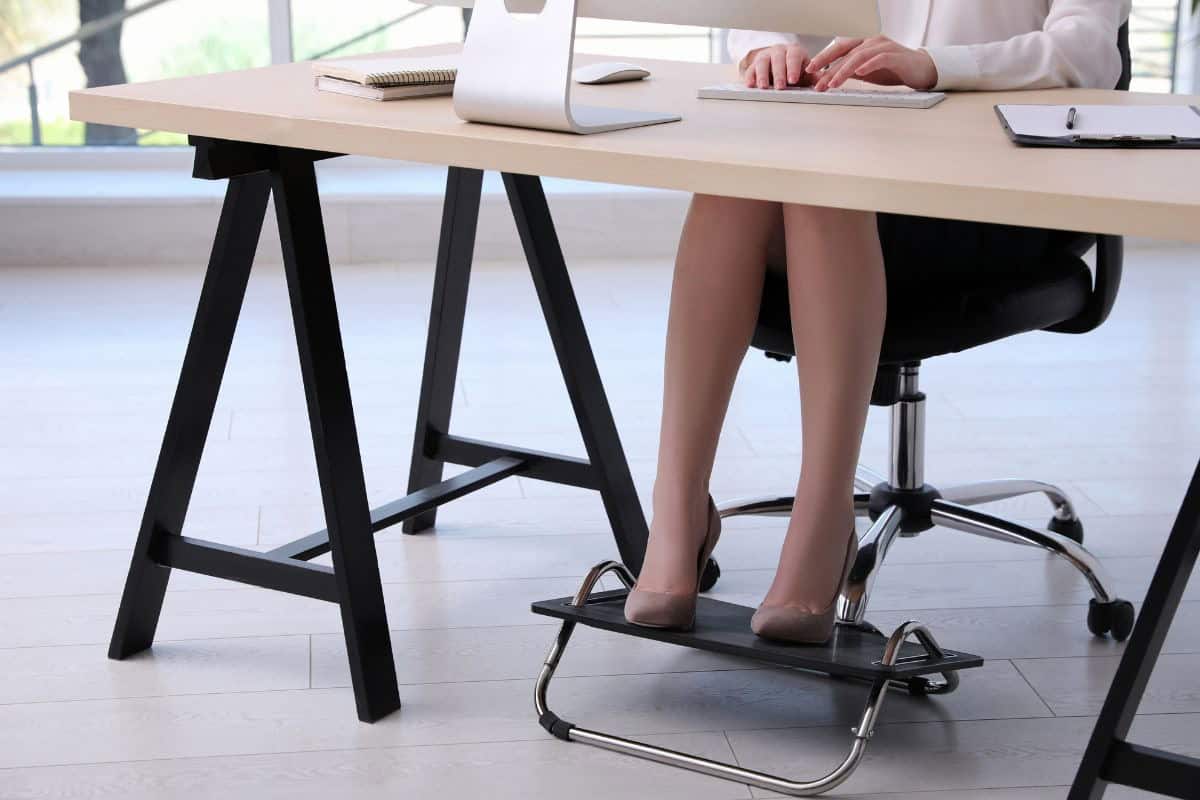
An ergonomic footrest is designed to provide support and improve posture while seated. By elevating your feet slightly, using a footrest helps to align your body properly, reducing strain on your lower back and improving circulation.
When you sit with your feet planted on the floor, it can cause your thighs to angle downward, putting pressure on your lower back. Similarly, if your feet don’t reach the ground, you have the tendency to sit forward in your chair, resulting in a lack of support on your back.
A footrest corrects this by raising your feet, allowing your knees to be level with or slightly higher than your hips. This alignment reduces the likelihood of back pain and encourages a more neutral posture.
What Are the Benefits of Ergonomic Footrest?
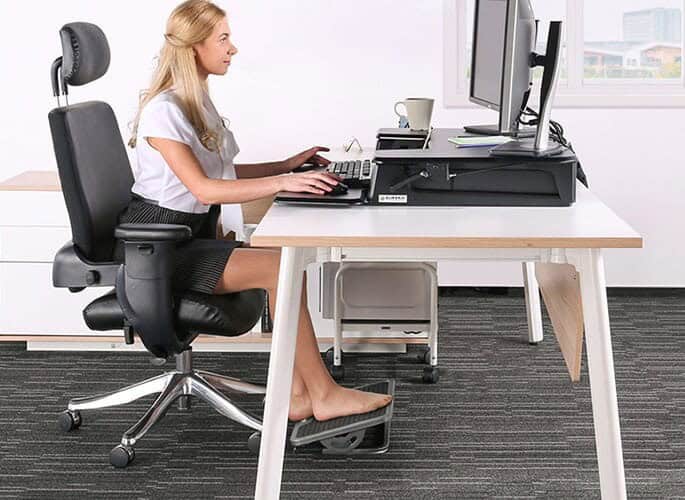
Dynamic ergonomic footrests offer a range of benefits that can significantly enhance comfort and well-being, especially for those who spend extended periods being seated. Unlike a static footrest, a dynamic footrest allows for movement and adjustability, which can have several positive effects on your posture, circulation, and overall health.
Encourages Movement
One of the primary benefits of an active footrest is that it encourages active sitting. This means that a footrest gives you the ability to rock, tilt, or swivel your feet while you sit, helping you keep your lower body active.
Such movements reduce the risk of stiffness and muscle fatigue that often accompany prolonged sitting. By allowing slight movements, a footrest can help prevent the discomfort associated with staying in one position for too long.
Improves Blood Circulation
Dynamic footrests also play a crucial role in improving circulation. When you sit in the same position for long periods, blood flow to your feet and legs can become restricted, leading to issues such as swelling, varicose veins, blood clots, or even deep vein thrombosis (DVT).
The foot movement facilitated by a foot rest helps to stimulate blood flow, reducing the likelihood of these circulation-related problems. This is especially beneficial for most workers who are at risk of developing leg circulation issues due to sedentary work environments.
Enhances Comfort and Reduces Stress
In addition to physical health benefits, dynamic footrests can enhance comfort and reduce stress, unlike when you let your feet rest flat on the floor. The gentle rocking or tilting motion can have a calming effect, helping to alleviate mental tension during long workdays.
This soothing movement can be particularly helpful for people who experience stress or anxiety, as it provides a simple way to relieve discomfort and promote relaxation.
Promotes Proper Posture
The right footrest can promote proper posture by encouraging you to maintain a more natural position. When your feet are free to move, you are less likely to slump or adopt poor posture.
By promoting a balanced and more comfortable position when seated, a footrest helps to reduce strain on your lower back, shoulders, and neck, contributing to overall musculoskeletal health.
Adaptable to Different Needs
Another advantage of an ergonomic footrest is its adaptability. Many models have adjustable height settings, making it easier to find a comfortable position that suits your individual needs.
Whether you need more support for your feet or prefer a specific range of motion, an adjustable footrest can be customized to provide optimal comfort and support throughout the day.
Is A Desk Foot Rest Good for You?
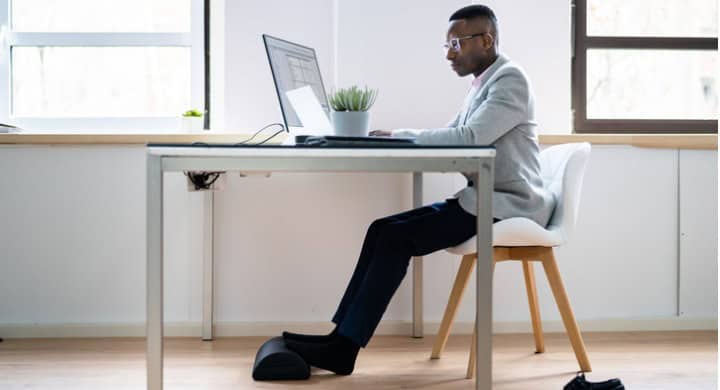
Yes, footrests are good for you, particularly if you spend a lot of time sitting. A desk footrest helps to reduce the risk of developing varicose veins, alleviates poor circulation, promotes better posture, and reduces pressure on your back muscles, hip muscles, legs, and feet.
Using a footrest also helps to reduce swelling in the ankles and feet, which can occur after being seated for extended periods. Overall, using a footrest can contribute to a more comfortable and healthier working experience.
Are Footrests Good for Knees?
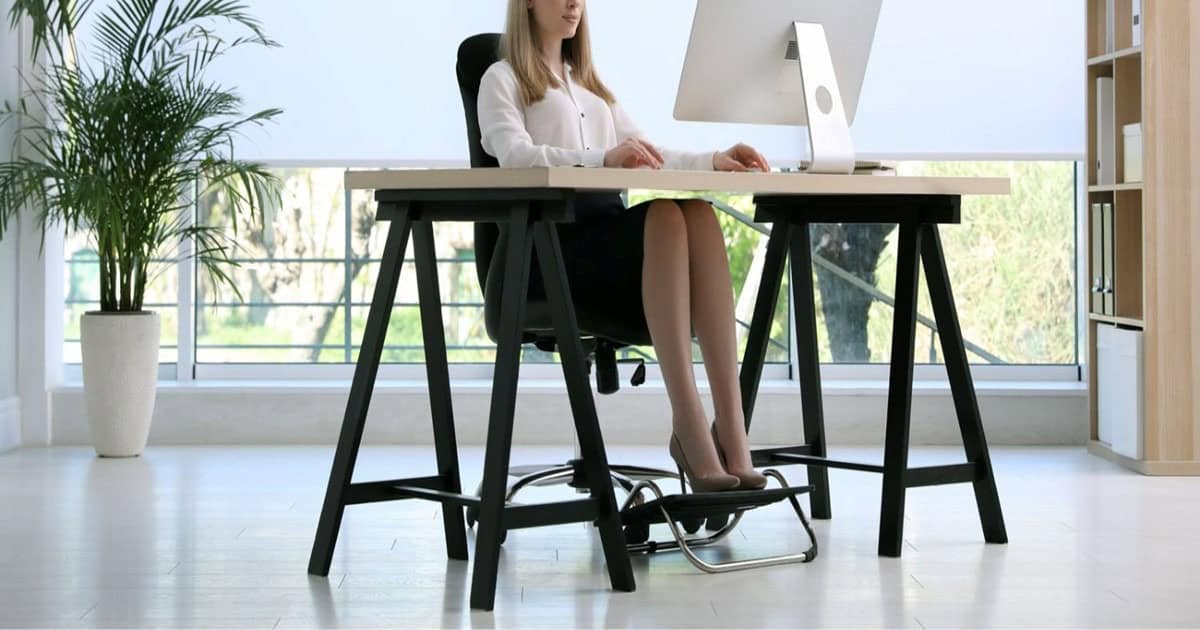
Footrests can be beneficial for your knees as well. When your feet are properly supported, it reduces the discomfort on your knees that can occur from positioning your legs at an awkward angle.
A footrest allows you to keep your knees bent at a comfortable angle, reducing pressure on the knee joints and ligaments. This is particularly important for individuals who are prone to knee pain or have pre-existing knee conditions.
How Do I Use a Footrest?
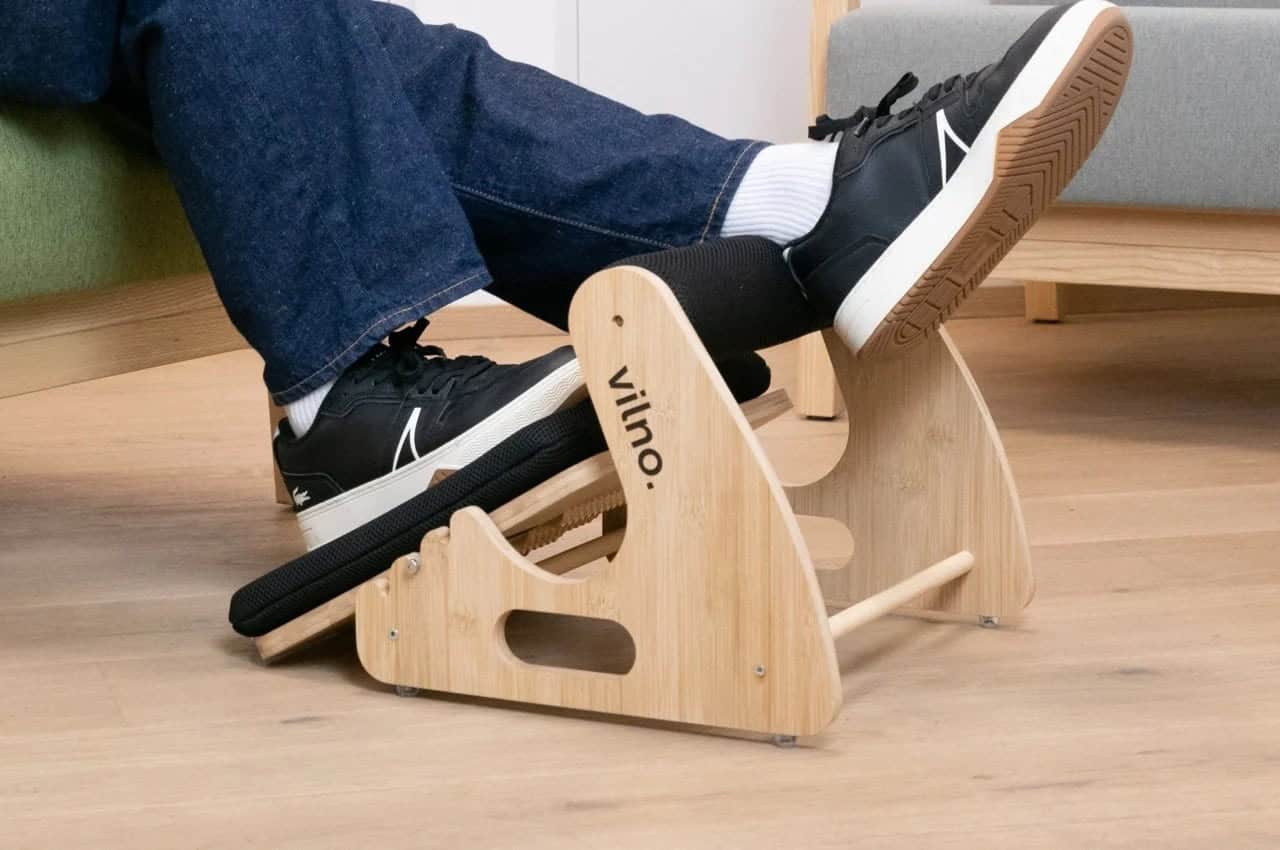
Using a desk footrest can greatly improve your comfort and keep you positioned upright while working. To make the most out of this tool, it’s important to know how to position it correctly and use it effectively.
Positioning the Footrest
Before everything else, make sure that your chair is at the right height for you. Let your feet rest flat on the floor and you shouldn’t experience any pressure or pain on your lower back or thighs. Place the footrest directly in front of your chair, and your feet should easily reach it while you’re seated. You should not lean forward on your chair.
Adjusting the Angle
A lot of footrests come with adjustable features, allowing you to find the most ideal position for your feet. Tilt the footrest to an angle that feels natural and comfortable. Your soles should be able to rest on the surface without slipping. Adjusting the angle periodically throughout the day can also help reduce stiffness in the legs and improve circulation.
Pairing With an Ergonomic Desk and Chair
For optimal results, pair your footrest with ergonomic furniture such as standing desks or adjustable chairs. Both items can support your body and allow you to work comfortably, enhancing the benefits of the footrest.
Ensure that your adjustable seat or standing desk is adjusted to the right height so that your feet can rest comfortably without straining your legs or back.
Taking Breaks
While using a footrest can improve and support your soles and body, it’s still essential to take regular breaks and adjust yourself throughout the day. Stand up from your desk, stretch, and walk around periodically to relieve pressure on your legs and back.
Final Note
An ergonomic under-desk footrest comes with a ton of benefits, making it a valuable addition to any workspace. It is a simple yet effective way to enhance your comfort, reduce pain, increase your energy levels, and encourage you to have good posture while working.
Use a foot rest with an office chair, a regular chair, or even a bar stool, or pair it up with a standing desk or your usual office desk, and you’ll see a big difference in your overall working experience.
